For the users
Usage guide
- 1. Who are the groups of users that might be interested?
- 2. What is the main function of CRMarker and how to use
CRMarker quickly? - 3. How to download our data?
- 4. How to submit your data?
- 5. What are other important structures and functions of the database?
- 6. Bug Report or Question?
1. Who are the groups of users that might be interested?
It is mainly a group of researchers engaged in nucleic acid research (for example, mRNAs, non-coding RNA research, competing endogenous RNA, etc.), disease research (especially cancer research) and RNA molecular interaction and regulation research.
2. What is the main function of CRMarker and how to use CRMarker quickly?
The main function of CRMarker is search function and prediction function. To facilitate the users to achieve the two functions, we have designed two ways: (1) quick search and quick prediction; (2) advanced search and prediction functions.The former has been specifically placed in the home page.
For quick search, on the one hand, we have provided a graphical quick search interface, users can find the corresponding RNA markers by cancer icon and RNA type in the Home page.


On the other hand, users can directly enter a biomarker name or cancer for search under the alternative of cancer diagnosis or cancer prognosis in quick search. We also provide predictable function modules when users’ search fails. Users may find the results they need through prediction. When users select the predicted data set and the biomarker type, the function of direct prediction can also be realized. These feature prompts are already indicated in the small icon of the question mark at the end of the search or prediction of the prompt text. For the latter, advanced search and prediction functions, we have already introduced below.


In the search results, we provide the name of biomarker to be searched (or multiple markers including the marker to be searched), sample or tissue type, cancer type, cancer subtype, PubMed PMID, and article title. The results searched are often not a piece of information, it may display multiple entries, and it will output all relevant information contained in our database.
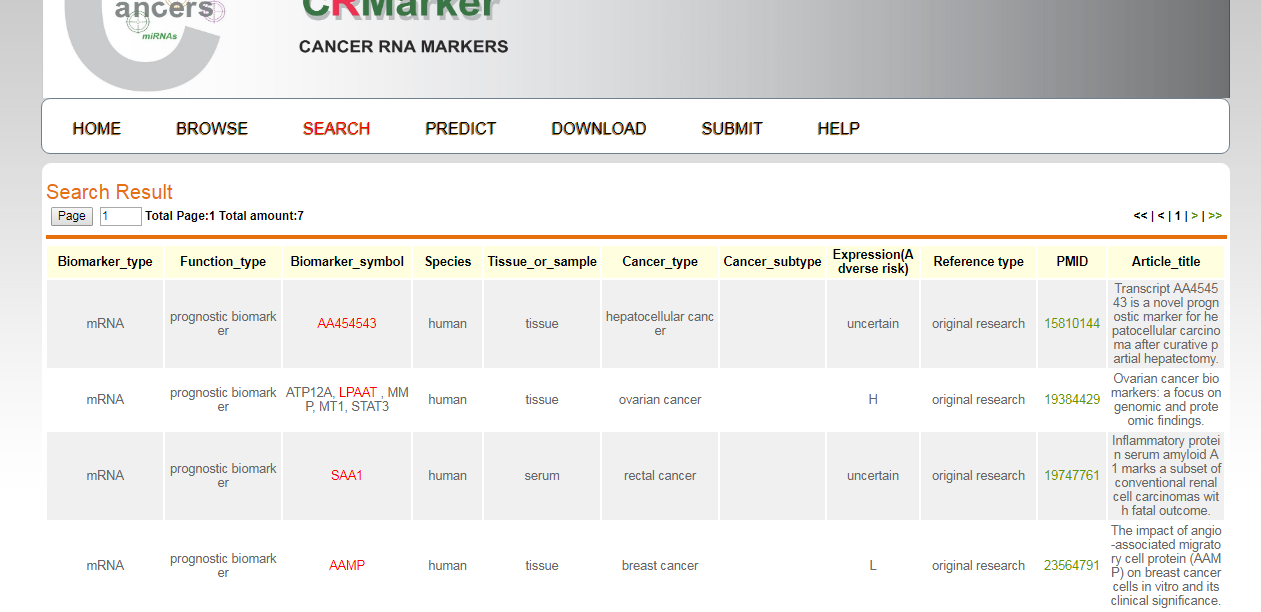
The predicted results provide different information. Based on the principle of guilt-by-association of network prediction, in the results of the network prediction, the results show all known markers that are directly associated with the predicted markers in the database, and give a confidence level based on their number.
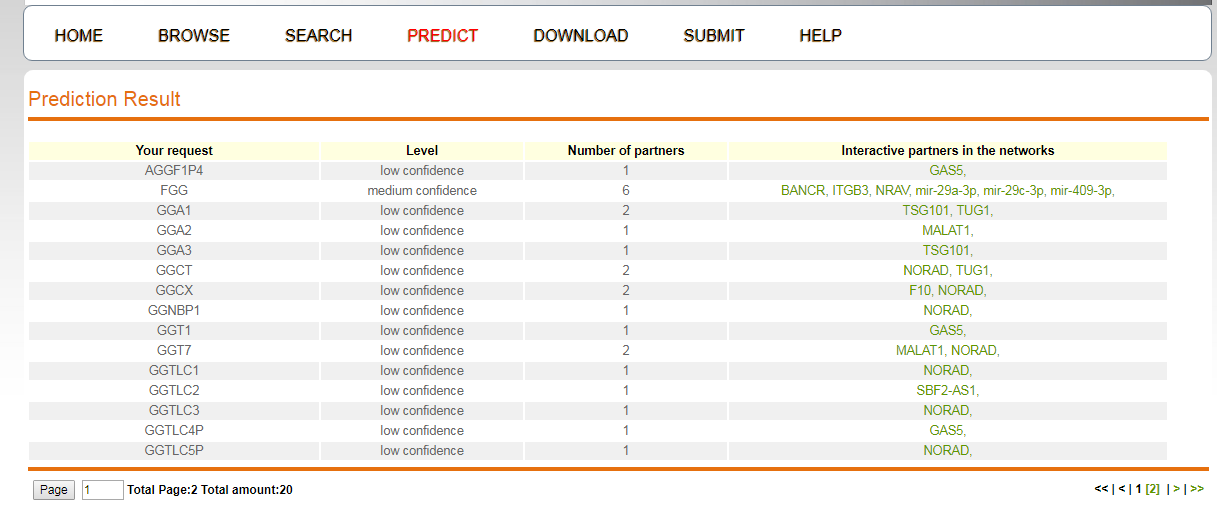
For chip data with survival information, we calculated two p-values, p-value of the log-rank test and p-value of the Cox model. When both of them are less than 0,05, we predict that these mRNAs may have the function of a prognostic mRNA.In the results, we show the predicted results of biomarkers, the number of occurrences in 18 chip datasets, and determine their confidence level.

3. How to download our data?
In the menu of download function, users can freely download all the manually curated data and predicted data in this database.
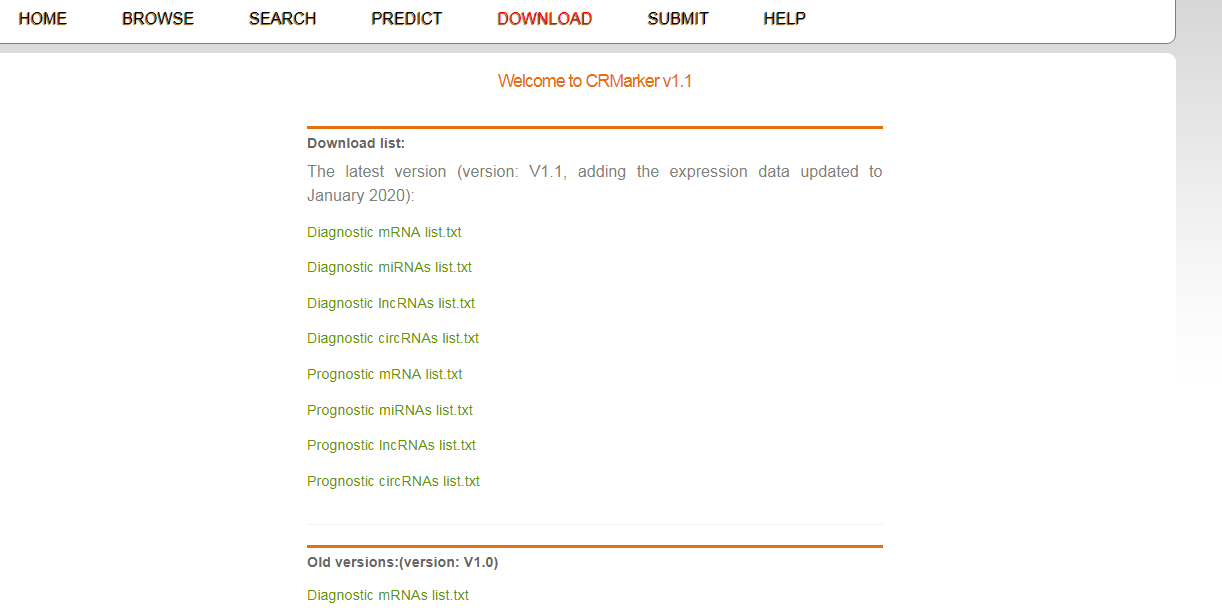
4. How to submit your data?
Our website provides a function page of submission, and we hope that researchers related to the data on the website will be able to submit their latest research results to us in a timely manner, which will help us to get and update data faster.

5. What are other important structures and functions of the database?
(1) Compared to quick search and prediction in the homepage, our database has advanced search and advanced prediction functions(namely, SEARCH and PREDICTION) with more options and is more conducive to screening under multiple conditions.
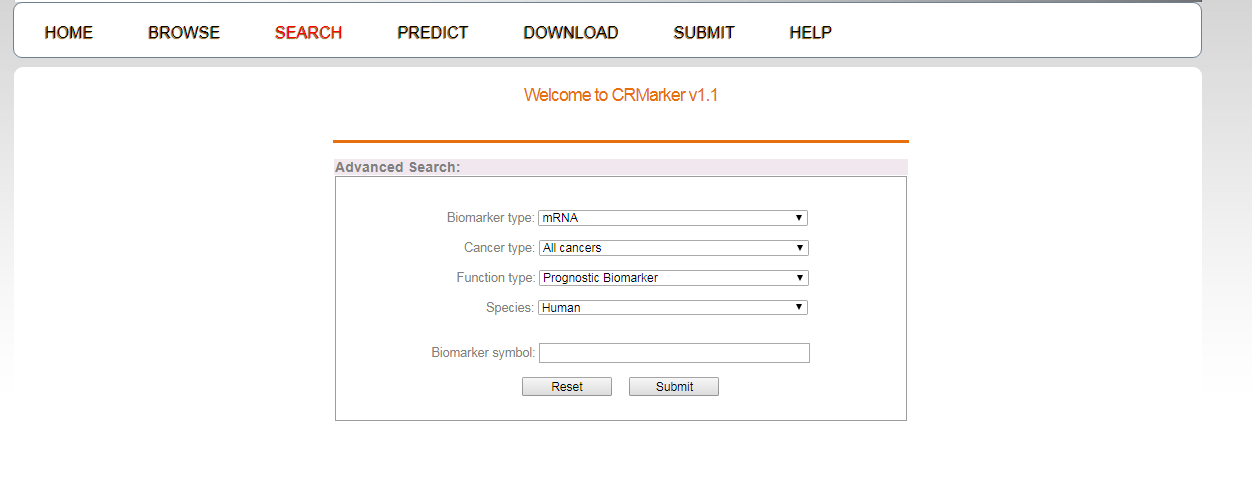

(2) The browse function provides users with an overview of the overall structure of the database, demonstrating hierarchical relationships between different sub-data. It helps users understand the structure of the database.Click the hyperlink to display the results in the table below.
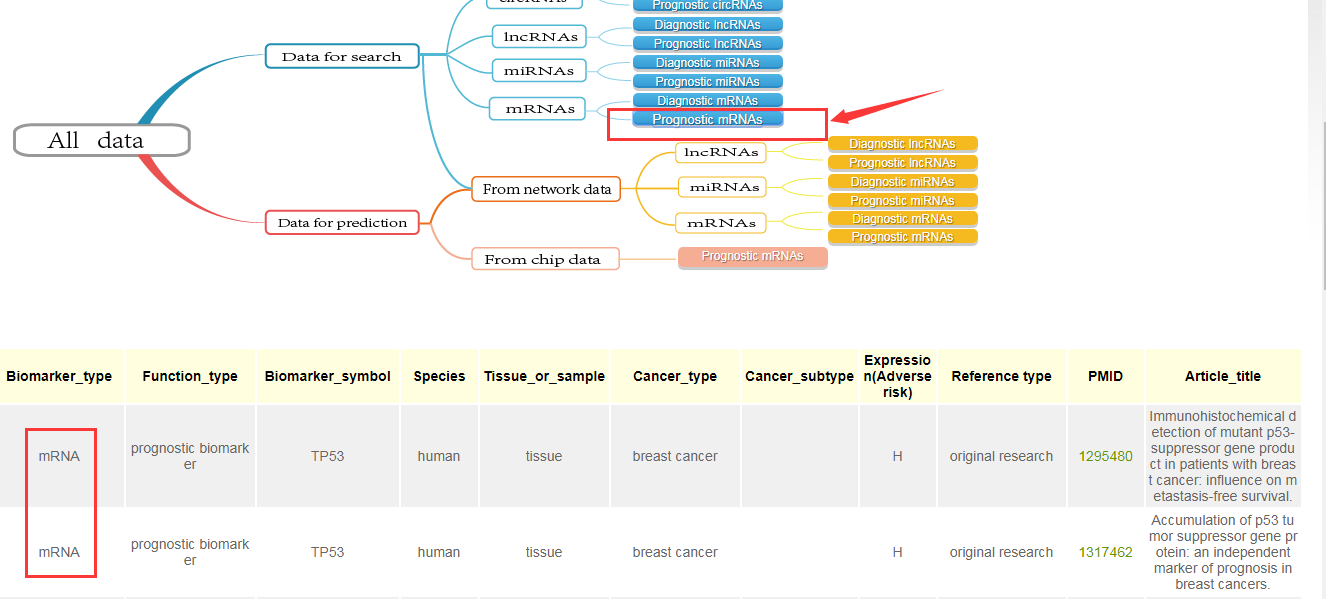
6. Bug Report or Question?
If you have spot an error in any of our web server, have a question or suggestions for us, we would be delighted if you would please contact us at jifengzhang {at} fudan.edu.cn.



